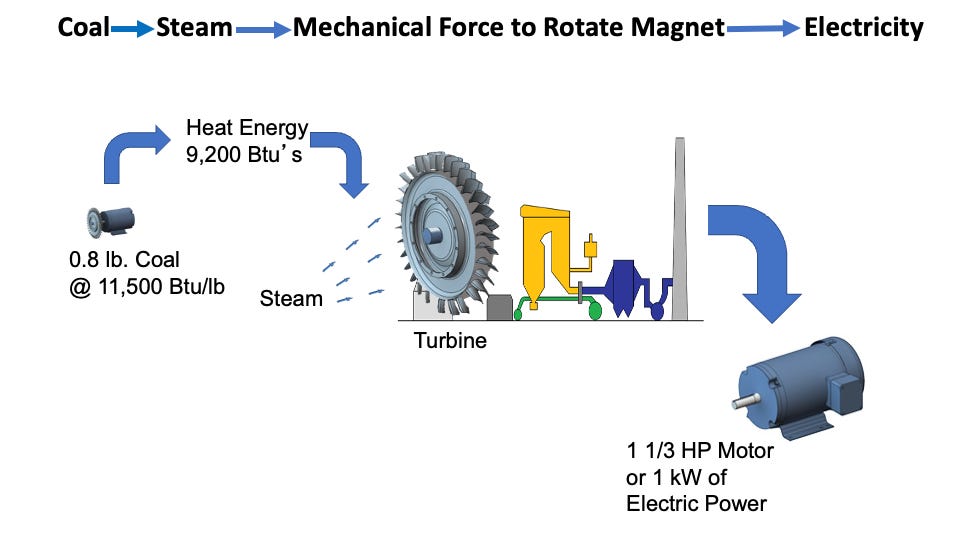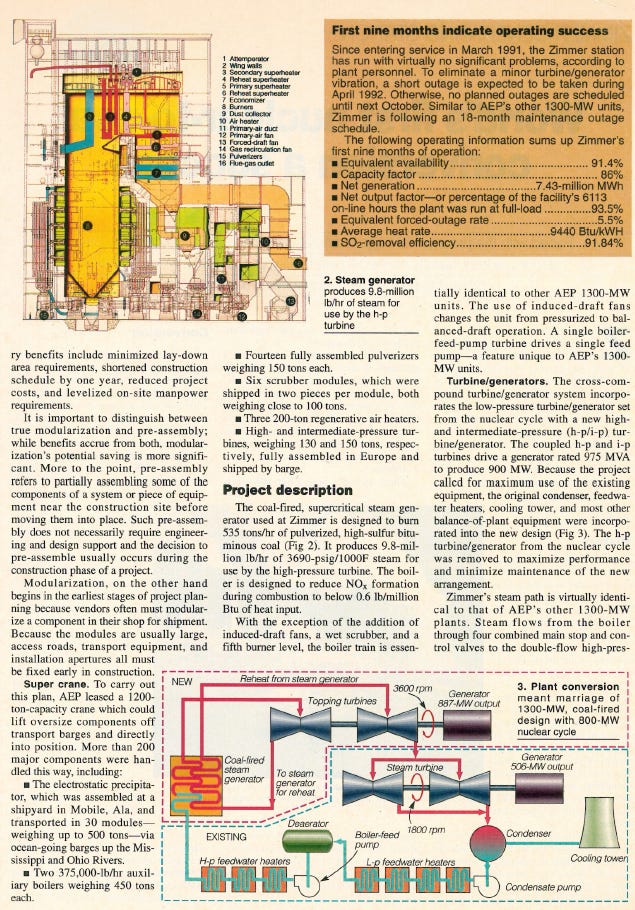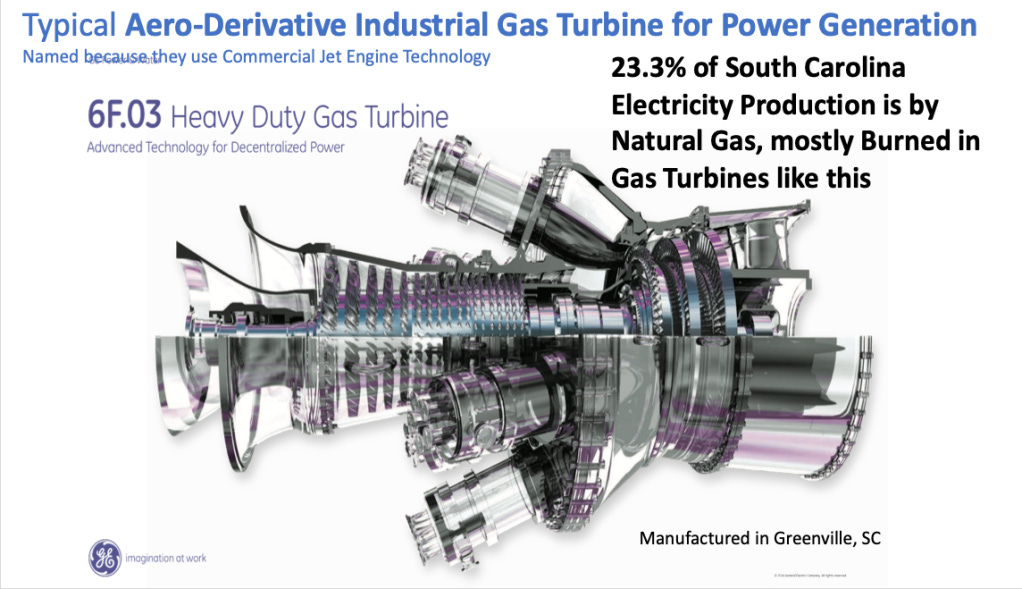Guest Post from Dick Storm.
The 20th century began with much farm work, transportation, heating and home chores being done with muscle power and wood burning. As coal, petroleum, natural gas and later nuclear energy were applied to replace muscle power, our country experienced rapid growth in industrial production, food production, shipping, travel and a growing economy. Also, comforts and conveniences at home and work such as air conditioning, refrigeration, cooking, dishwashers, automatic washers, and more. A previous article on the history of energy is here.
That 105 year period 1850-1955 yielded incredible growth in both industrial output and economic growth. The strength of the U.S. grew and expanded for the U.S. to become the Greatest country in the world, with the largest economy in the world. This was made possible by many factors, including; the Judeo-Christian work ethic of the people, Liberty, Capitalism, Free Markets, creativity, inventiveness, innovation and the abundance of God’s given treasure of Domestic energy resources. Including the richest deposits of coal in the world, natural gas and petroleum. America, the Saudi Arabia of Coal!
An important point, not often discussed. Wherever there is coal, so is there oil and gas. In 2023, the U.S. produced more crude oil than any other country. This in spite of excessive Federal regulations and an out of control EPA.
Reasonable cost and abundant energy was essential for America’s success, just as energy is essential for any other country’s success. America’s energy use is reported in British Thermal Units (BTU) and the U.S. uses about 100 Quadrillion BTUs each year. The Energy Institute and the International Energy Administration reports world energy use in Exajoules (EJ) and the world uses about 620 Exajoules per year. (0.947817 x 620 EJ= 587.6 Quadrillion BTU)
Why Horsepower?
I have written on this before and had some feedback from readers and friends that “The general public doesn’t understand it when they are told they use about 850,000 BTUs of energy each day or the U.S. used 100 Quadrillion BTUs in a year”. Therefore, for this two part essay I thought I would express electricity energy in “Horsepower.”
Rather than BTUs, kWH, Joules or Foot-Pounds, this article expresses energy production in Horsepower because, especially my family and friends, horsepower is a term most folks look at when buying a new car or truck, whether it is a 250 Hp Diesel fueled Ford F-150 or a 1020 Hp Tesla Model S. The fuel for each must first be provided by Primary Energy used to create either motive force or electricity.
Primary Energy
About 92% of the Primary energy used in America is used in Heat-Engines to power our high quality of life. About a third of the primary energy used in the U.S. is used to generate electricity. This article is intended to be a primer on the massive Heat-Engines that keep our Grid energized. Part 2 will include smaller heat-engines used for electric power generation and those used for transportation.
It is my goal to keep the Thermodynamics simple so that non technically trained people can understand the importance of the 92% conventional Primary energy that we depend on. Past articles that I have written attempted to explain the differences of Primary Energy and Secondary Energy. Here, Here and Here. Primary energy flows in the U.S. for the year 2022 is shown on the LLNL chart here. The World use of Primary energy is shown by the Energy Institute here.
Common Large Heat-Engines
Definition of a Heat-Engine: A heat engine is a system that converts heat to usable energy, particularly mechanical energy, which can then be used to do mechanical work. Such as a Steam Turbine which converts the heat energy of steam into rotational force to spin a generator to produce electricity.
Also, a gas turbine or turbo-jet engine that uses heat energy to create rotational force to a shaft. A portion of the heat energy is exhausted as waste. The difference of the heat content of the steam or hot gas at the inlet and at the exhaust is the net work that has been extracted for useful purposes. In this article steam and gas turbines will be discussed. In a power plant the steam turbine or gas turbine is sometimes referred to as the Prime Mover.
A previous article touches on Heat-Engines. The illustration below is a graphical description of the conversion of coal fuel to provide heat used to generate steam. The steam is then used to spin a turbine providing the motive force creating shaft horsepower to spin a generator and ultimately generating electric power. The heat source to produce steam can be coal, nuclear, natural gas, oil, biomass or municipal waste. The basic steam cycle remains the same, referred to in our industry as the “Rankine Steam Cycle”.
Thermal Power is important for everything we do!
One pre-requisite to understanding Heat-Engines, is to understand the difference between Primary Energy and Secondary Energy. Covered in previous articles, here, here and here.
Types of Heat-Engines
Let’s start with one of the largest first. Here is a photo of the Zimmer Coal Plant. This plant shut down in 2022 but when started up in 1991 it was amongst the largest single unit power plants in the world with 1351 MW capacity, Dispatchable 24/7, rain or shine, summer or winter. This plant was one of my favorites and in my opinion, it is an example of one of the most magnificent heat engines ever built.

The photo above is just part of the power plant, showing the Low Pressure Turbine and generator. There is also a High Pressure turbine and separate generator. The entire Zimmer “Heat-Engine” comprises the entire power plant shown below in an aerial photo.
Although I have been in the power generation business for over 50 years, it still amazes me that so much of the equipment involved in the total electrical energy production starting with a coal conveyer moving 500 tons per hour of coal can be pulverized and burned, produce steam to the turbines and generate electricity to the Grid through three high voltage wires that are smaller than 2″ in diameter and 1.8 million horsepower of energy.
The Zimmer Coal Plant when operating at full capacity of 1350 MW’s is equivalent to about 1,800,000 Horsepower. To generate this much power about one million pounds of 11,000 BTU/# coal would be pulverized and burned in suspension in the furnace each hour. That is one reason why I refer to this power plant as a Magnificent Heat Engine.
The million pounds per hour (Imagine five 100 ton coal cars/hour) of coal is converted into electricity that flows through three high voltage conductors to the transmission lines feeding the Grid. The water flow to the steam generator is equivalent to about 20,000 gallons per minute. An Olympic swimming pool holds about 600,000 gallons.
At maximum capacity the Zimmer steam generator will evaporate the equivalent of two Olympic swimming pools full of water each hour and heat that water to steam at over 3,845 pounds per square inch and 1,000 degrees F. The single turbine driven boiler feed water pump is powered by a 50 MW (67,000 Hp) steam turbine which is about as powerful as all the power consumed on a hot summer day in my old town (about 20,000 people) in Albemarle, NC. Fifty Megawatts is the power to drive just the feed water pump.
These are a few reasons why I consider Zimmer to be a magnificent Heat Engine. An excerpt from the POWER Magazine 1992 feature article is copied below.
Nuclear Power Generation
The Oconee Nuclear Plant is another example of Thermal power generation. Allow me to also call this a heat engine. Three units with a total capacity of 2,554 MW. The illustration below is from the Duke Energy Fact Sheet.

This three unit nuclear powered “Heat-Engine” is about twice as large in total output as the Zimmer Coal Plant discussed above. Expressed as Horsepower, the three units together represent the equivalent of over 3.3 million horsepower.
Both the Zimmer and Oconee plants utilize the Rankine Steam Cycle.
Natural Gas Turbines
Modern gas turbines used for power generation are referred to as “Aeroderivative” Why? Because the gas turbine technology used is derived from jet engine designs. I wrote on the history of power generation in a previous article here. Two engineers, one German and one British are credited with the invention of the jet engine which came to be in the mid 1930’s.
The first gas turbine application to power generation is generally thought to be by General Electric at the Belle Isle Station in Oklahoma, about 1949. The simple Gas Turbine single cycle is called the “Brayton Cycle”. An illustration of a modern Gas Turbine is shown below.
The generator is not shown in the above illustration but it will be similar to the generator shown above at the Zimmer coal plant. The point is that heat energy is used in each example thus far. For Zimmer coal is used to generate steam supply to power steam turbines as prime movers. Oconee uses nuclear fission to provide the heat to generate steam for the steam turbines there. Both use the Rankine steam cycle. The gas turbine shown above utilizes the Brayton cycle to create hot gases that flow through the gas turbine as the prime mover for the generator shaft.
Gas Turbine Combined Cycle Plants (GTCC)
One of the major advancements in the last twenty years or so has been the commercial application of gas turbines and steam turbine cycles working together. That is using both gas turbines with a shaft connected to a generator and then exhaust heat recovery of the gas turbine in a boiler to generate steam to provide a steam supply to a steam turbine which is the prime mover of a second generator.
By combining the gas turbine and steam turbine cycles, a much greater overall efficiency can be achieved. Modern GTCC plants achieve up to 65% thermal efficiency.
The plant below is 697 MW capacity. Fueled by natural gas.
The GTCC plant electrical output of 697 MW is equivalent to 927,000 Horsepower.
Summary
Heat engines power our lives and very little is stated in the Main Stream Media about the importance of conventional energy. Especially, Thermal Energy. In fact, if anything is written or discussed on TV, the MSM demonizes carbon and thermal power. This article is an attempt to explain the immensity of electric power generation systems on which we depend.
There is a war to abolish fossil fuels which provide about 80% of the fuel needed to power our lives. This is best shown on the LLNL Energy Flow Chart below. Yes, it is expressed in BTU’s (British Thermal Units) and each BTU is equivalent to 778 foot pounds of work which may have been accomplished by muscle power 150 years ago, but now many politicians and leaders seem to have forgotten what conventional energy has made possible.
The Zimmer plant and many other fine coal plants are being decommissioned and most demolished, without replacement of similar reliable, affordable generation capacity. I wrote on this before, here, here and here. So have many other people and respected organizations that understand generation by conventional fuels. Some references of these others are included below.
Americans use between 833,000 and 1,000,000 BTUs of energy each day to sustain our quality of life. There are some misguided leaders and politicians that are on a path to destroy the magnificent prime movers that power our lives.
The environmental activists and Democrats in the U.S. have an anti-Carbon policy that has nothing to do with protecting human health or the environment. It is an agenda for one world government and control of our lives. We could paraphrase Martin Niemoller’s poem with the words….“First they came for Coal.”
Trust me friends, the Biden-Harris and Democrat Party Climate Policies are NOT based on protecting your health. The (D’s) hate fossil fuels, including natural gas. The U.S. is on a path this year, to depend on about 50% (interruptible pipeline supplied) Natural gas fuel for power generation. I do not think this is wise.
The Zimmer coal plant is an example of true “Energy Storage.” A coal pile plus, Coal barges tied up adjacent to the plant can provide weeks or months of Primary Energy storage. Pipelines are vulnerable to harm, whether accidental or malicious. Battery storage systems are for hours at best.
Think about Grid Security and the many threats, within our country from Deep State Regulators (EPA, BLM and more) and Politicians, as well as from criminal minded foreigners. There are many threats to the energy supply to the country we love. Threats to your conventional energy powered lifestyle…..Please, think before you vote.
See original post here for full story, references, and sources.
#NetZero #NaturalGas #Electricity #Coal #ClimateChange #Nuclear #Heat Engines
















Excellent! Wish this could be a required high school class subject.
"The Zimmer Coal Plant when operating at full capacity of 1350 MW’s is equivalent to about 1,800,000 Horsepower. " Consider that the following is the very first sentence of the Cincinnati Enquirer story from December 8, 1985: “The cries of protest that rang out for years against a nuclear-powered Zimmer Power Plant,” the reporter wrote, “have quieted since it was announced the plant would be converted to coal power.” https://environmentalprogress.org/big-news/2017/3/28/why-the-war-on-nuclear-threatens-us-all?rq=Zimmer